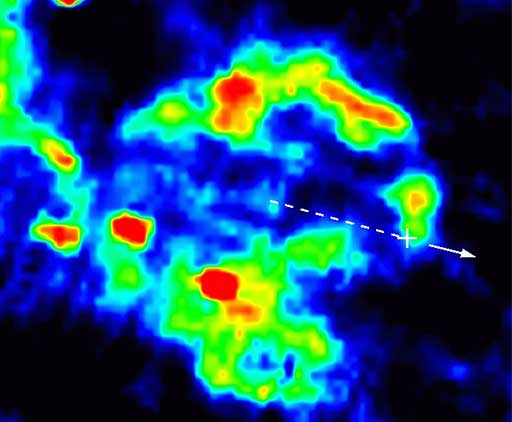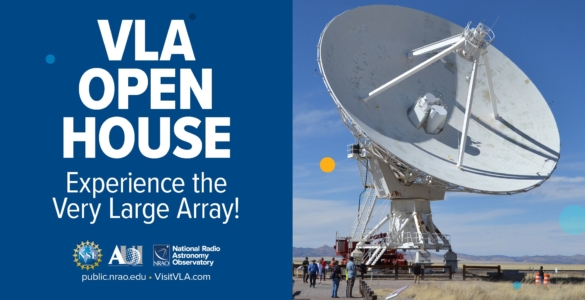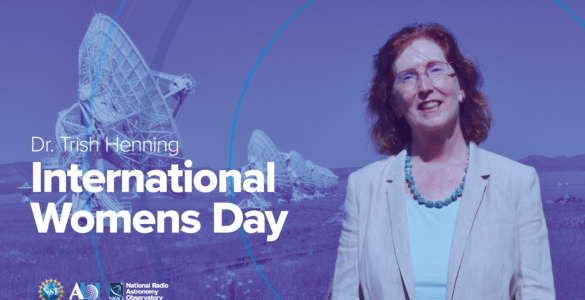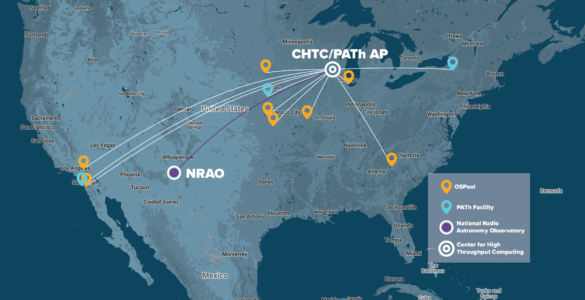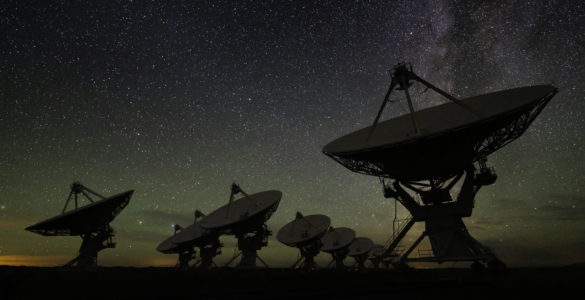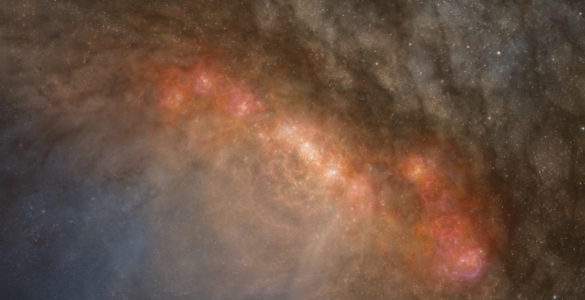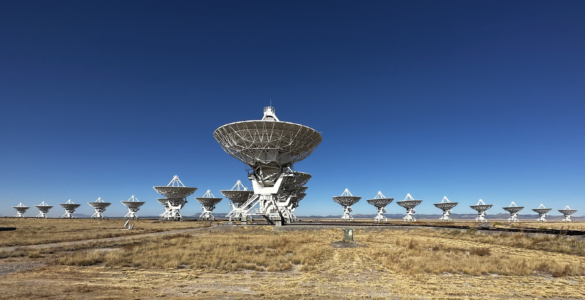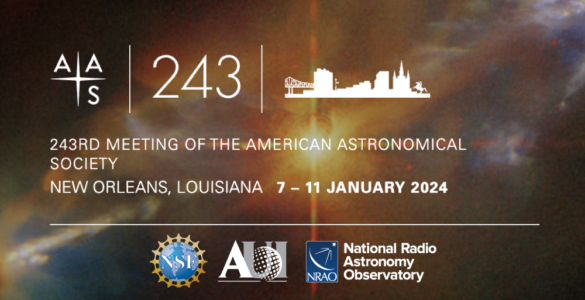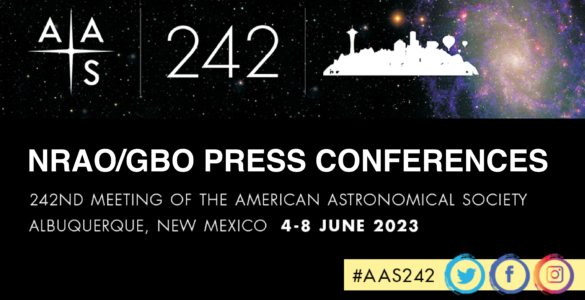Astronomers using the National Science Foundation’s Very Large Array (VLA) radio telescope have found a pulsar — a spinning, superdense neutron star — that apparently is considerably younger than previously thought. This finding, combined with the discovery in 2000 of a pulsar that was older than previously thought, means that many assumptions astronomers have made about how pulsars are born and age must be reexamined, according to the researchers.
“We are learning that each individual pulsar is a very complicated object, and we should assume nothing about it,” said Bryan Gaensler, of the Harvard-Smithsonian Center for Astrophysics in Cambridge, MA. “Our work makes it more difficult to put pulsars into neat categories, but ultimately will yield new insights into how pulsars are born,” he added. The research is reported in the March 10 edition of the Astrophysical Journal Letters.
The astronomers studied a pulsar called B1951+32 and a supernova remnant called CTB 80, both nearly 8,000 light-years from Earth. The supernova remnant is the shell of debris from the explosion of a giant star. The explosion resulted from the giant star’s catastrophic collapse into the superdense neutron star. By observing the pulsar and the supernova remnant from 1989 to 2000 with the VLA, the scientists were able to measure the movement of the pulsar, which, they found, is moving directly outward from the center of the shell of explosion debris.
“We’ve always felt that, if you see a pulsar and a supernova remnant close together, the pulsar had been born in an explosion at the center of the supernova remnant, but this is the first time that actual observational measurement shows a pulsar moving away from the center of the supernova remnant. It’s nice to finally have such an example,” said Joshua Migliazzo of the Center for Space Research at the Massachusetts Institute of Technology, another one of the researchers.
By tracking the pulsar’s motion for more than a decade, the astronomers were able to calculate that it is traveling through space at more than 500,000 miles per hour. At that speed, the pulsar required about 64,000 years to travel from its birthplace — the site of the supernova explosion — to its present location. That means, the astronomers say, that the pulsar is about 64,000 years old.
This age, however, differs significantly from the age estimated by another method which has been used by astronomers for decades. This method uses measurements of the rotation rate of the neutron star and the tiny amount by which that rotation slows over time to arrive at an estimate called the pulsar’s “characteristic age.” For B1951+32, that method produced an estimated age of 107,000 years.
“Now we have a pulsar that is much younger than we thought. In 2000, a different pulsar was shown to be significantly older than we thought. That means that some of the assumptions that have gone into estimating the ages of these objects are unjustified,” Migliazzo said.
The pulsar’s rotation is thought to slow because the neutron star’s powerful magnetic field acts as a giant dynamo, emitting light, radio waves and other electromagnetic radiation as the star rotates. The energy lost by emitting the radiation results in the star’s rotation slowing down.
Previous estimates of pulsar ages have assumed that all pulsars are born spinning much faster than we see them now, that the physical characteristics of the pulsar such as its mass and magnetic-field strength do not change with time, and that the slowdown rate can be estimated by applying the physics of a magnet spinning in a vacuum.
“With one pulsar older than the estimates and one younger, we now realize that we have to question all three of these assumptions,” said Gaensler.
Further research, the scientists say, should help them understand more about the conditions under which pulsars form and just how they get their spin in the first place. Neutron stars are formed in a fraction of a second as a massive star collapses onto itself, compressing its matter to the density of an atomic nucleus. During the collapse, the neutron star is thought to receive numerous “kicks” that spin it up.
The measurements of B1951+32’s position were made in 1989, 1991, 1993 and 2000, with the VLA. The 2000 observations also used the Pie Town station of NSF’s Very Long Baseline Array (VLBA), which improved the precision of the measurements. The other pulsar, which was found to be older than its estimated age, is called B1757-24 or “the duck.” The report on its motion and age was published in Nature in July of 2000.
In addition to Gaensler and Migliazzo, the researchers are: Donald Backer of the University of California-Berkeley; Benjamin Stappers of ASTRON in the Netherlands; Eric Van Der Swaluw of the Dublin Institute for Advanced Studies in Ireland; and Richard Strom of ASTRON and the University of Amsterdam in the Netherlands.
The National Radio Astronomy Observatory is a facility of the National Science Foundation, operated under cooperative agreement by Associated Universities, Inc.
Contact:
Dave Finley, Public Information Officer
Socorro, NM
(505) 835-7302
dfinley@nrao.edu


